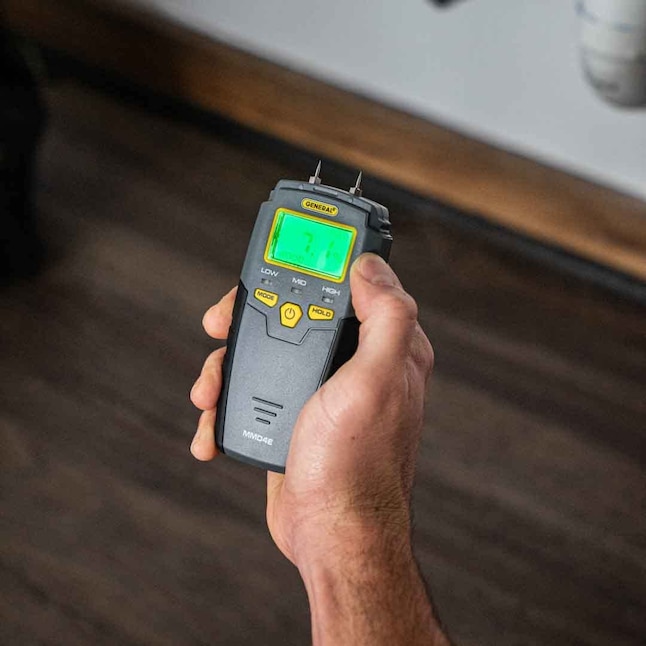The Ultimate Guide to Choosing the Right Moisture Meter for Your Needs
The Ultimate Guide to Choosing the Right Moisture Meter for Your Needs
Blog Article
Look Into the World of Moisture Meters: Everything You Need to Know
In the world of dampness meters exists a globe of accuracy and usefulness that frequently goes unnoticed. Recognizing exactly how moisture meters operate, the various kinds offered, and their varied usages can shed light on their significance in making sure high quality and effectiveness.
Just How Moisture Meters Work
Moisture meters operate by gauging the electric conductivity or capacitance of products to establish the dampness web content existing. These meters are vital devices across different sectors, including building and construction, woodworking, and farming. By using various methods such as pin-type or pinless technology, moisture meters give exact readings that aid experts make notified choices.
Pin-type dampness meters function by putting the sharp pins into the material being evaluated. The electric conductivity in between the pins is after that determined, with greater dampness levels leading to boosted conductivity. Moisture Meter. On the various other hand, pinless wetness meters make use of electro-magnetic signals to scan a bigger area without creating any damage to the product's surface. These meters are optimal for swiftly assessing dampness levels in huge areas or completed items.
Regardless of the technique made use of, wetness meters play an important function in avoiding problems such as mold development, structural damage, or item problems brought on by excess moisture. Comprehending how these meters work is important for making certain the high quality and honesty of materials in numerous applications.
Kinds Of Moisture Meters
Provided the important function dampness meters play in different industries, it is vital to recognize the various types readily available to experts for properly evaluating moisture degrees - Moisture Meter. There are primarily two main kinds of dampness meters: pinless and pin-type wetness meters

On the other hand, pinless dampness meters make use of electromagnetic sensor plates to check a larger location of the product without causing any damages. This type is suitable for rapidly scanning huge areas and is generally utilized for flooring, wall surfaces, and ceilings. Pinless meters are practical for taking readings on finished surfaces without leaving any noticeable marks.
Both sorts of moisture meters have their benefits and are selected based upon the details requirements of the work at hand. Recognizing the distinctions between these types is vital for professionals to make accurate dampness evaluations.
Applications Throughout Industries
Construction specialists depend on moisture meters to analyze the wetness degrees in building materials like wood, drywall, and concrete, which is essential for keeping structural honesty and avoiding concerns like rot or mold. The floor covering market makes use of wetness meters to measure the dampness content in subfloors prior to installing numerous floor coverings, preventing expensive problems due to excess moisture. In the food market, wetness meters are made use of to keep an eye on and regulate moisture levels in items such as grains, nuts, and dried out fruits to maintain quality and top quality.
Tips for Utilizing Dampness Meters
Make use of the dampness meter's calibration setups to ensure accurate readings when measuring the moisture content in various materials. Furthermore, make sure the meter is set to the appropriate dampness array for the product you are gauging to get the most specific outcomes.
When making use of a pin-type wetness meter, place the pins to the proper depth suggested for the material being evaluated. This makes sure that the wetness readings are drawn from the appropriate depth within the product, giving an extra exact representation of its moisture web content. For pinless dampness meters, remember to maintain correct contact with the material's surface to obtain reliable analyses.
Frequently check and change the batteries in your wetness meter to stop imprecise readings due to reduced power. When not see here now in use to lengthen its lifespan and preserve its accuracy, Shop the meter in a dry and secure location. By following these ideas, you can take full advantage of the performance of your wetness meter and Check Out Your URL get accurate dampness web content measurements throughout various materials.
Upkeep and Calibration
To ensure the accuracy of dampness content measurements, normal maintenance and calibration of the wetness meter are essential actions in its appropriate performance. Upkeep involves keeping the dampness meter clean and totally free from debris that might influence its readings. It is essential to follow the maker's standards for cleaning to avoid damage to the gadget. In addition, regular calibration is required to confirm the accuracy of the analyses. Calibration adjusts the wetness meter to make sure that it gives consistent and reputable outcomes.
Calibration needs to be done regularly, especially helpful resources if the dampness meter is utilized frequently or in crucial applications where precise measurements are called for. Many dampness meters come with calibration devices or can be adjusted by expert services. Moisture Meter. It is recommended to maintain a log of calibration days and results to track the performance of the moisture meter with time. By maintaining and calibrating the moisture meter frequently, users can rely on the precision of the wetness content dimensions acquired.
Conclusion

Finally, wetness meters play a critical function in various industries by precisely gauging the wetness web content of products. Comprehending just how these devices work, the various kinds available, and appropriate maintenance and calibration are necessary for obtaining reputable outcomes. Whether in farming, manufacturing, or construction, using dampness meters aids ensure quality control and effectiveness in processes.

In final thought, moisture meters play an important function in different industries by accurately gauging the dampness material of materials.
Report this page